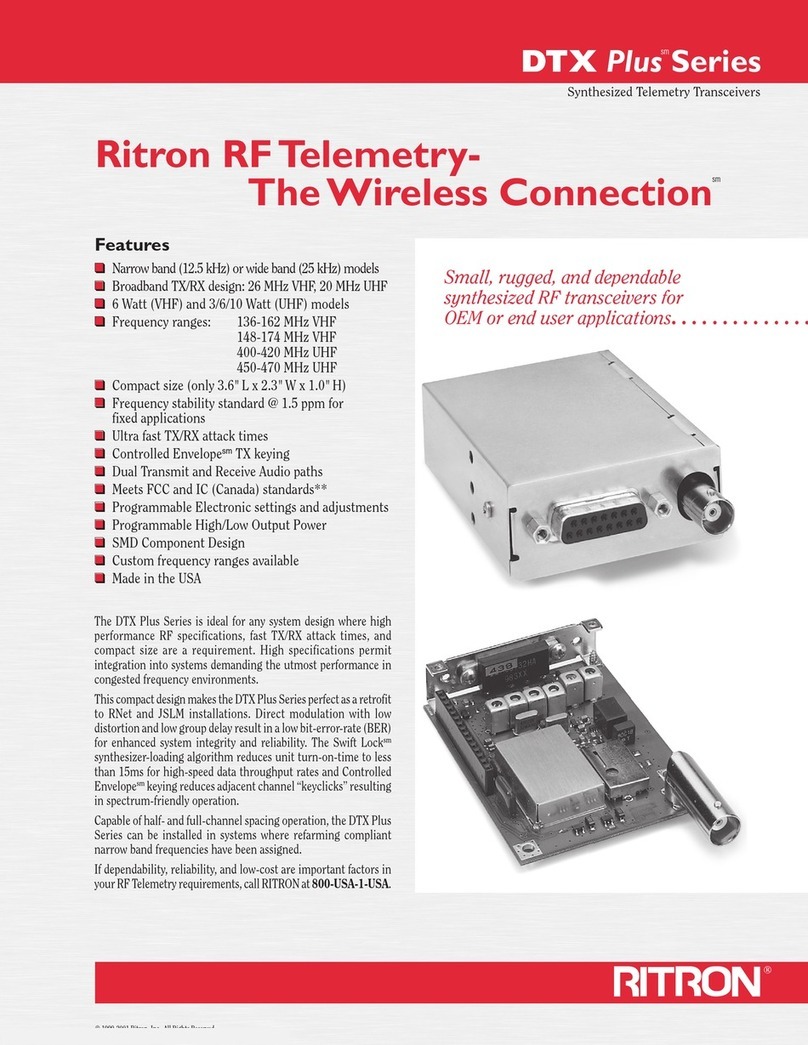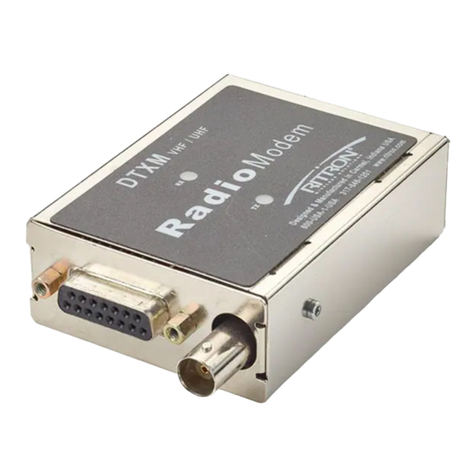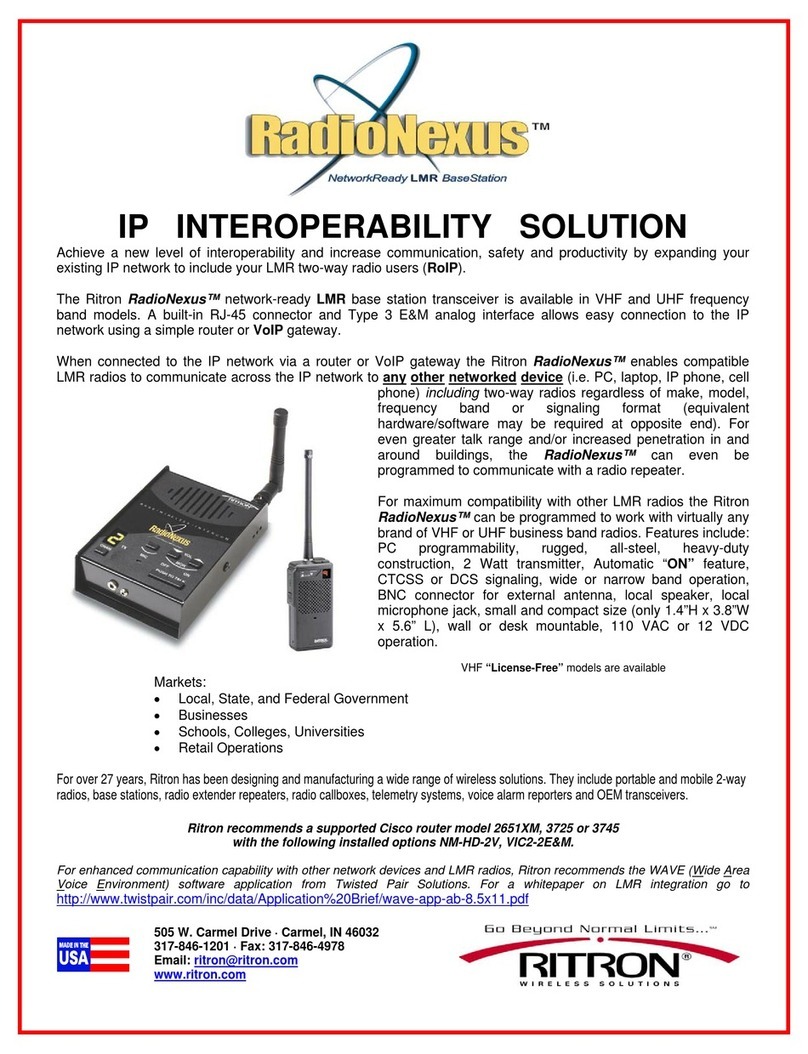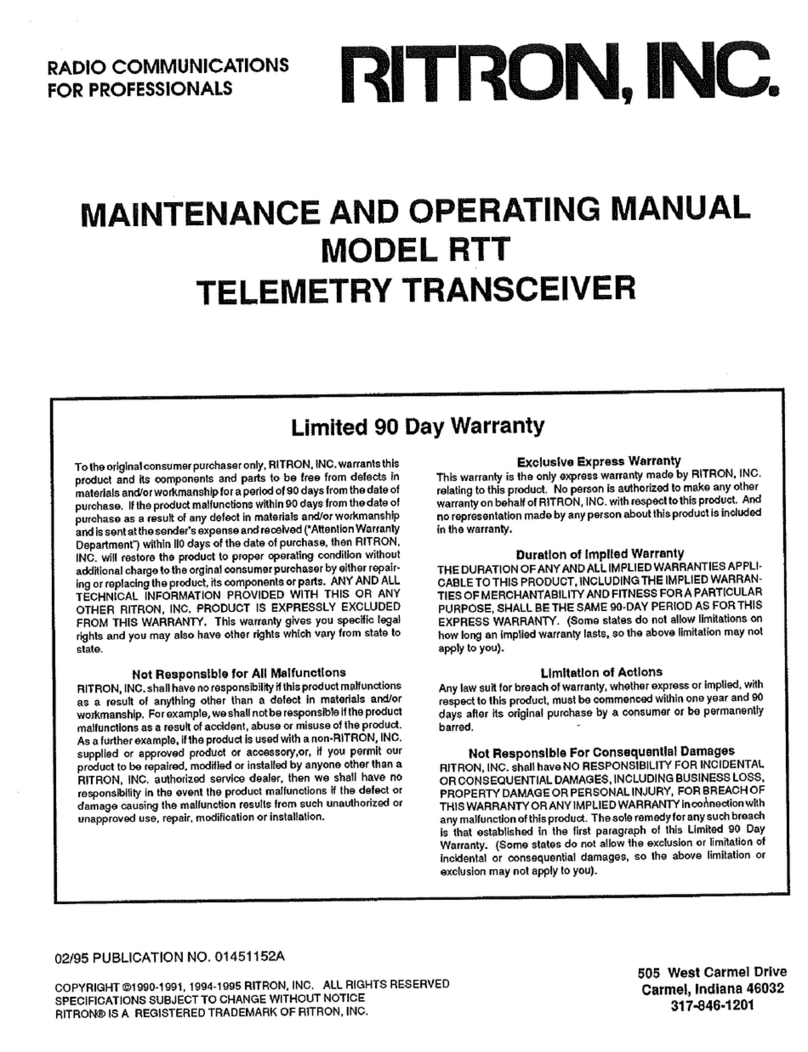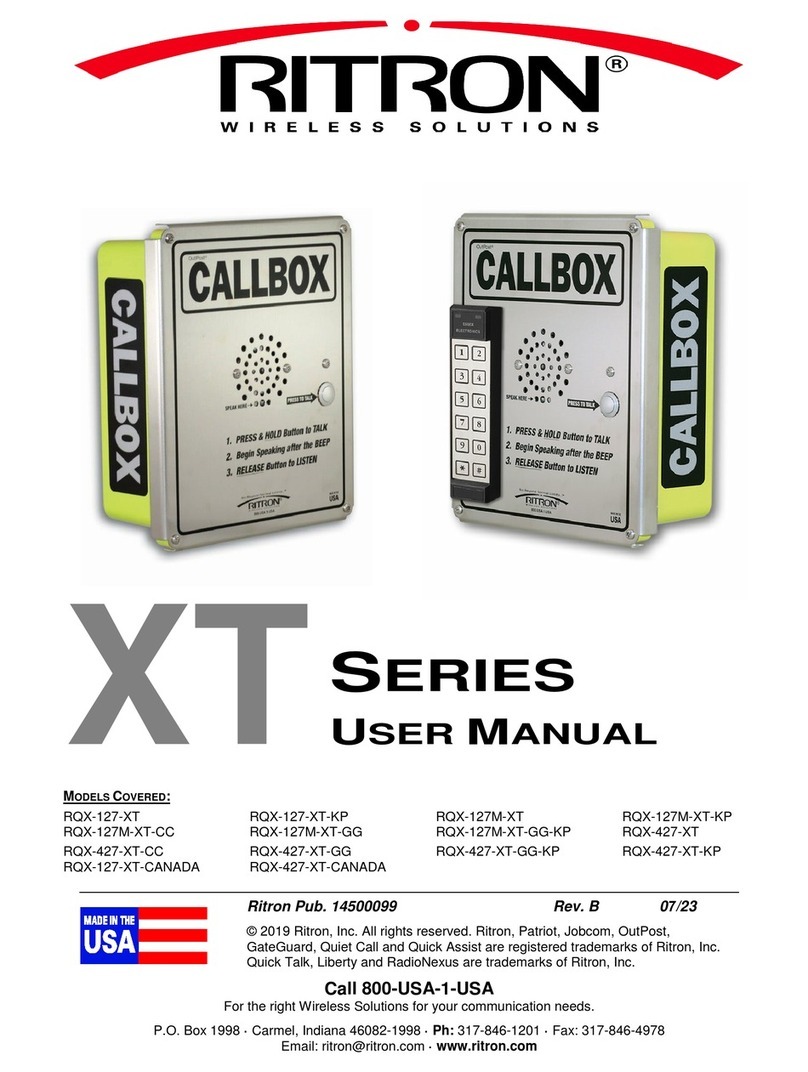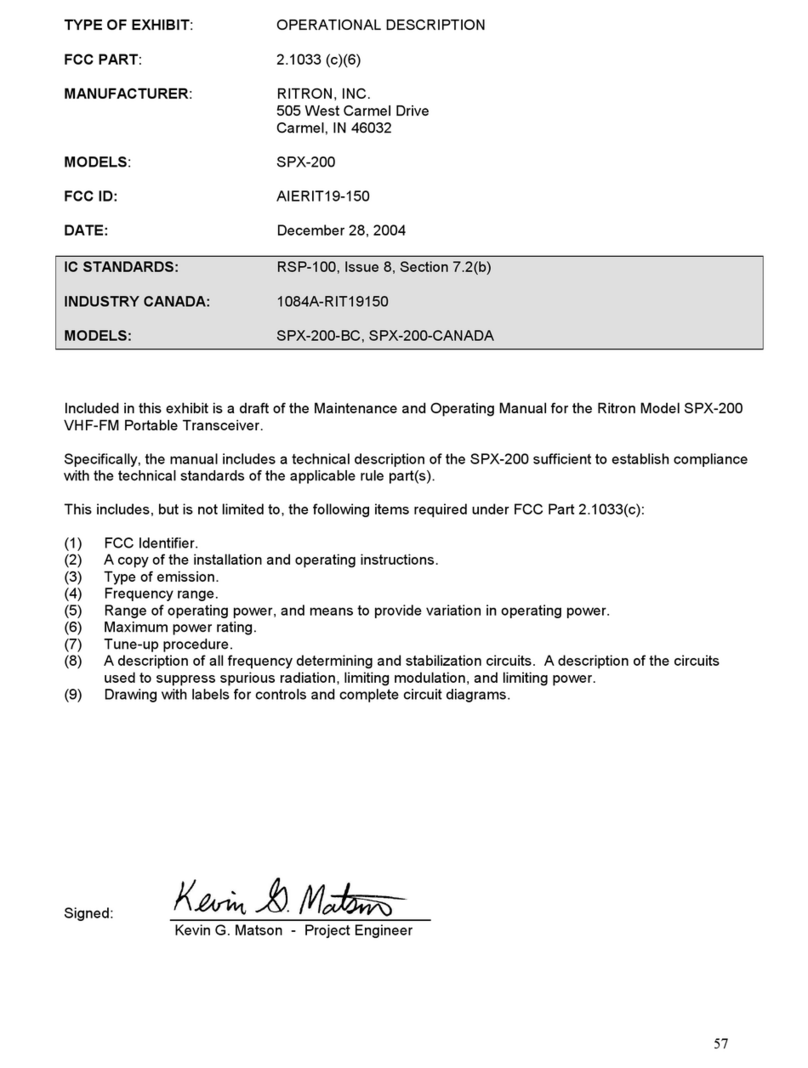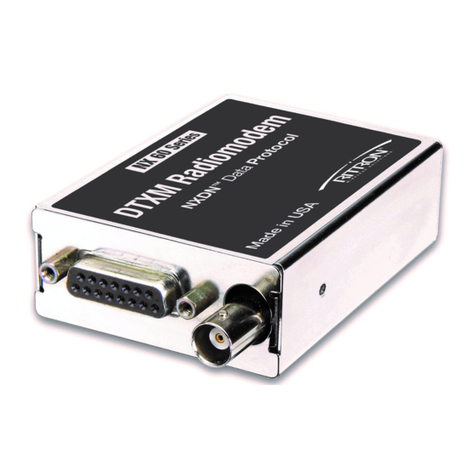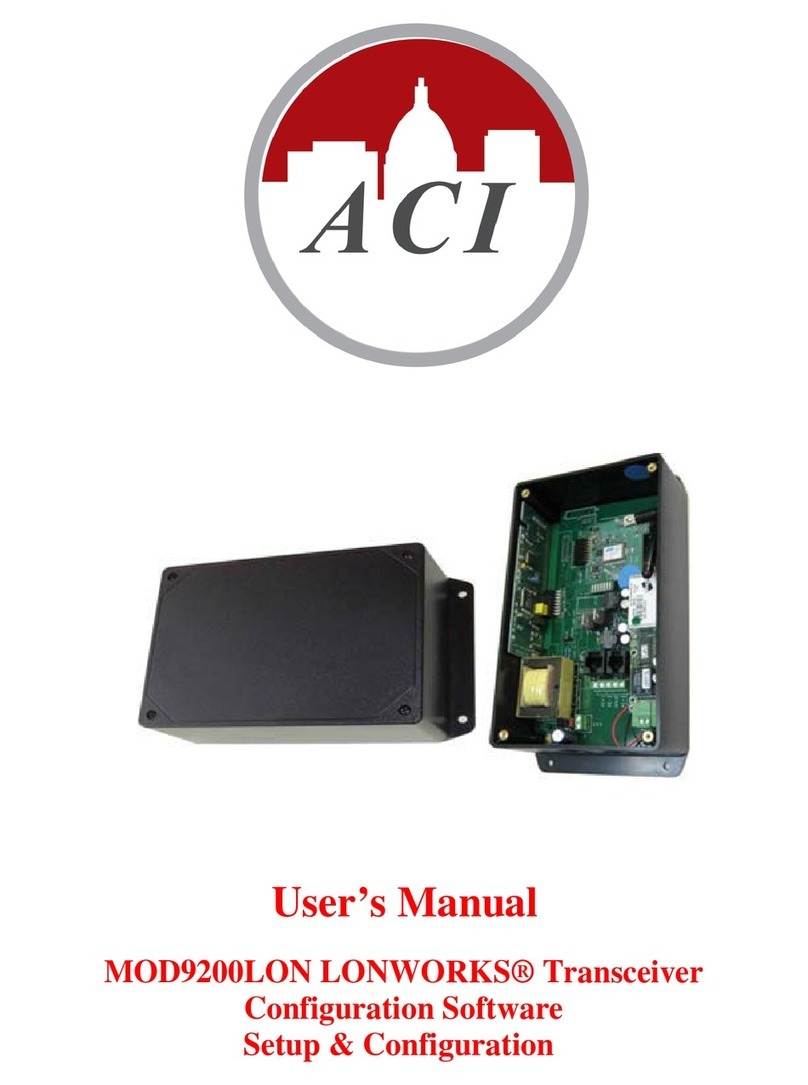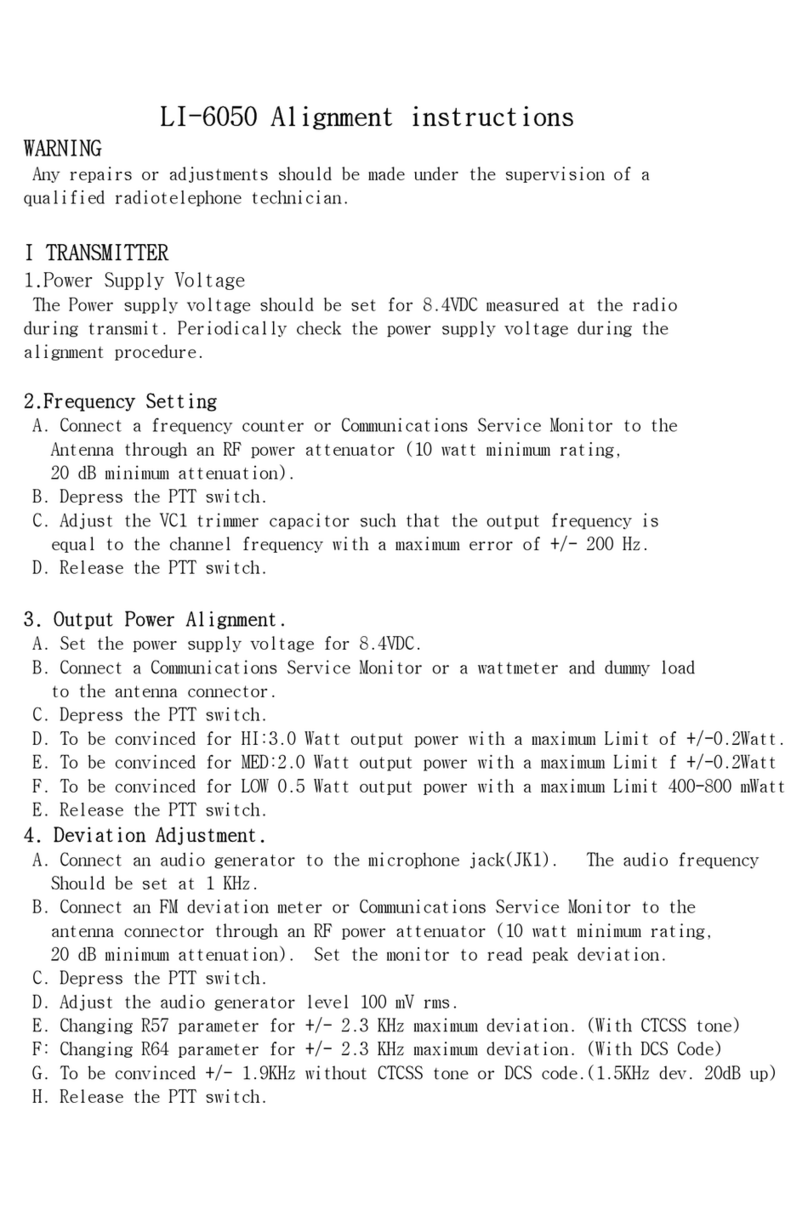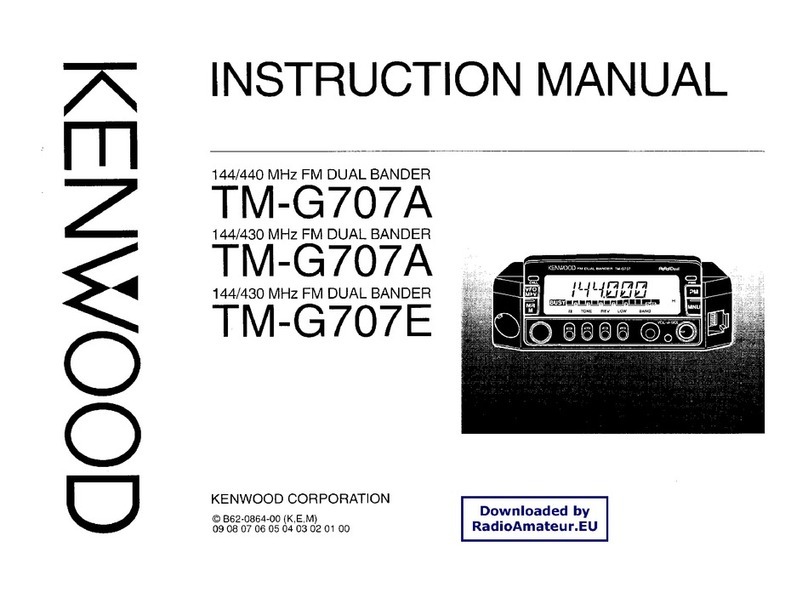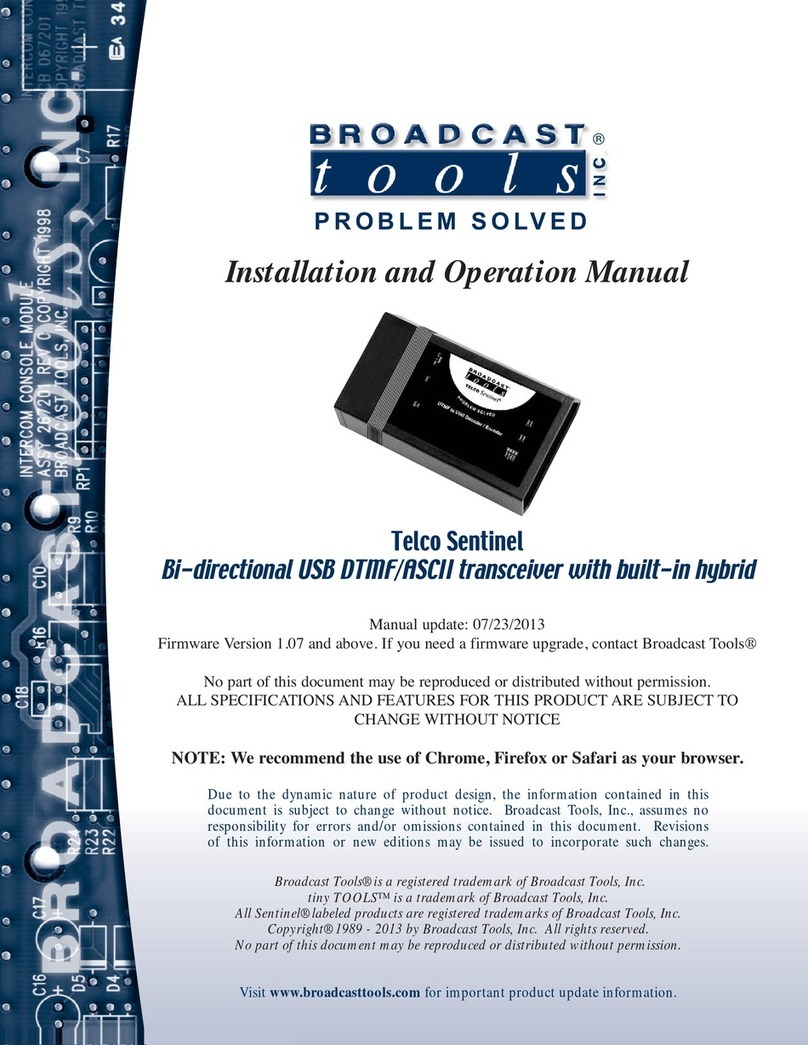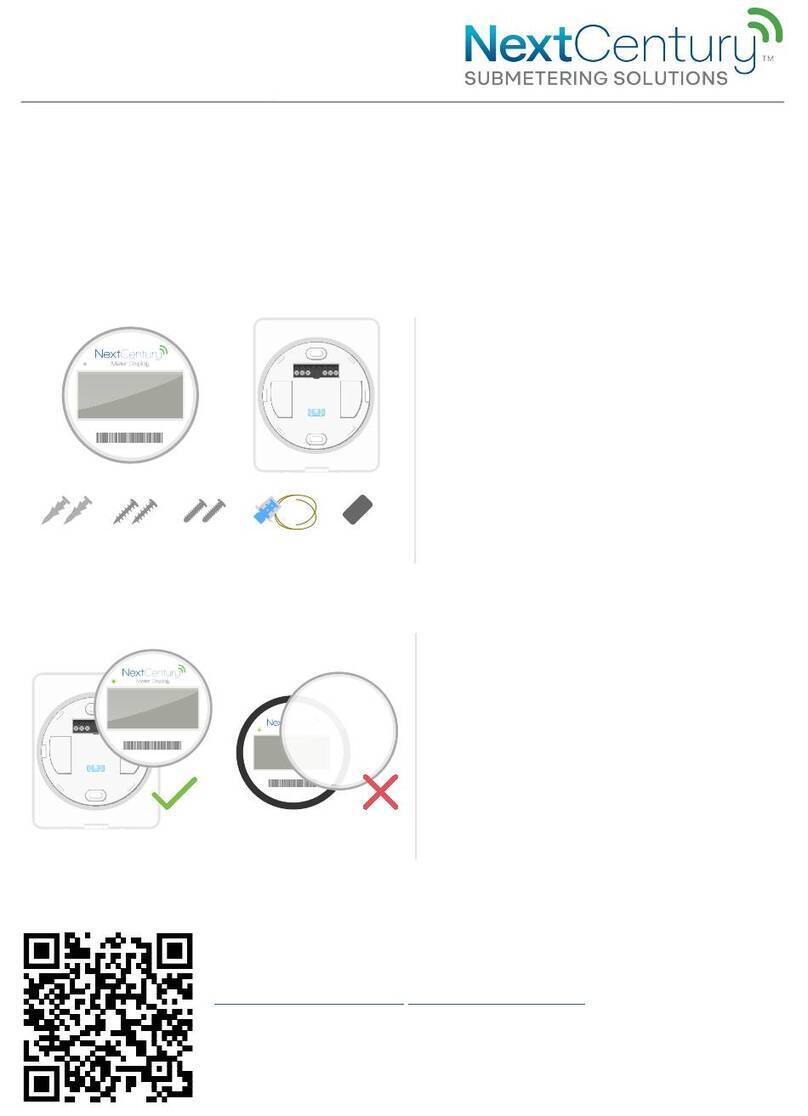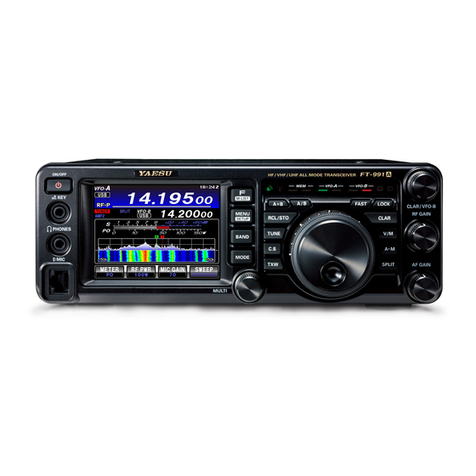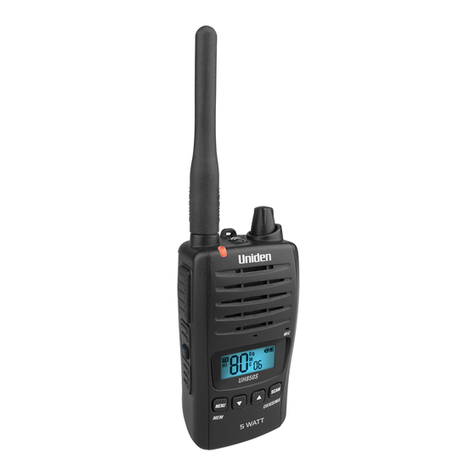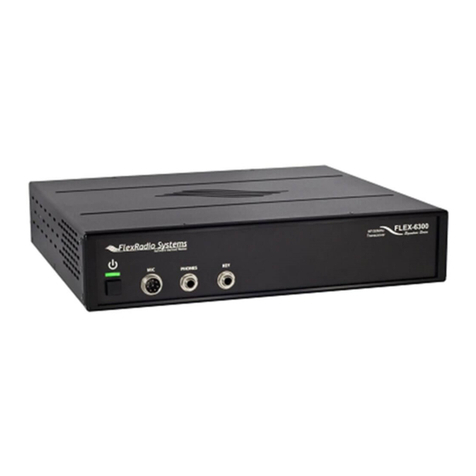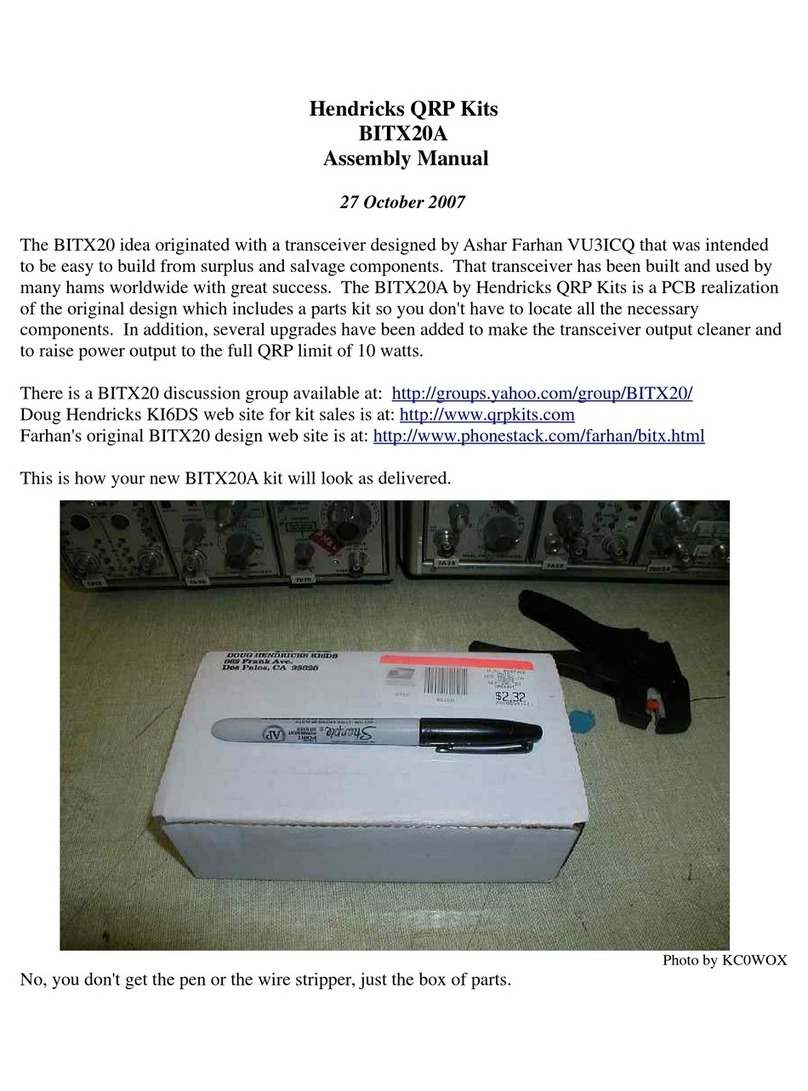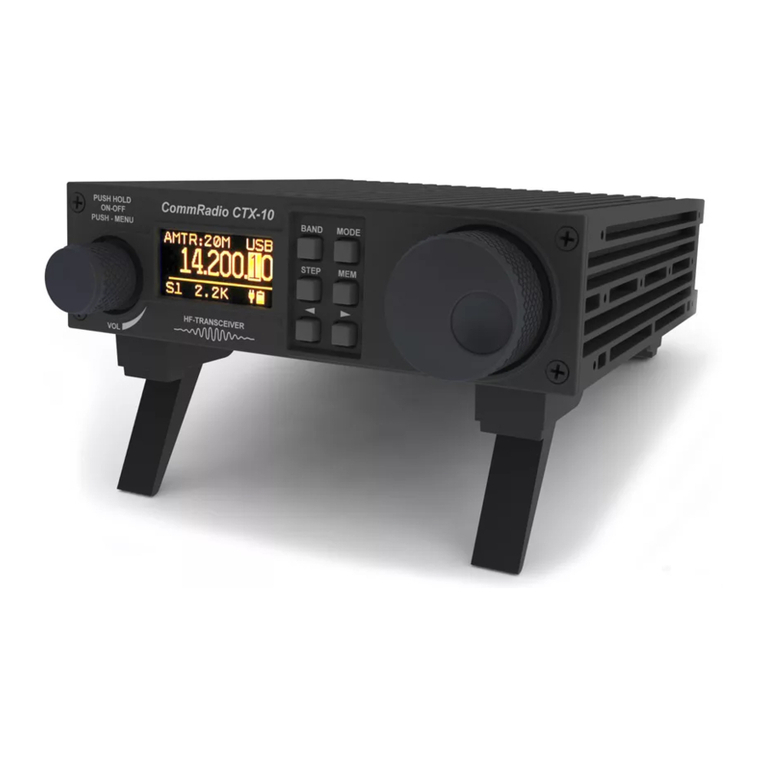
10
SST-444 THEORY OF OPERATION
RECEIVER
As mentioned before, Q101 switches the regulated +5 VDC to the receiver. The +VRX receiver voltage is
switched at the strobe duty cycle if programmed for power strobe.
RF Amplifier
A received signal from the antenna passes through a low-pass filter (L207, C216, C217, L206, C101, and
C202) to the receiver headend. L101 and the associated capacitors form a bandpass filter ahead of low-
noise RF amplifier Q102. L101 and C103 provide a notch at the image frequency, 87.3 MHz below the
receive frequency. The amplified RF signal is applied to a 2-pole bandpass filter consisting of L103, L104,
and associated capacitors. This circuit can be tuned for any 10 MHz band between 450 and 470 MHz.
1st Mixer
The amplified received input signal is applied to the gate of FET mixer Q103. The 1st local oscillator
signal from the synthesizer module is applied to the source of Q103. L106, C117 and C118 tune the drain
output of Q103 to 43.65 MHz and apply it to YF101, a 43.65 MHz two-pole crystal filter. Q104 and
associated components amplify the 43.65 MHz IF signal and apply it to the input of the 2nd mixer at Pin 16
of IC101.
FM Receiver Subsystem
A multi-function integrated circuit, IC101 and associated components for the FM-receiver subsystem. The
subsystem performs the following functions: 1) 2nd mixer, 2) 2nd IF amplifier, 3) FM detector, and 4)
noise amplifier.
The Pin 4 output of 14.4 MHz reference oscillator Y302 is multiplied up to 43.2 MHz by Q105 and
associated components. This signal is applied to the 2nd local oscillator input at Pin 1 of IC101. The
43.65 MHz signal at Pin 16 and the 2nd local oscillator are mixed, with the resulting 450 KHz output signal
appearing at Pin 3. This signal is filtered by a 450 KHz 6-pole ceramic filter YF102 and applied to the
input of the limiting IF amplifier at Pin 5. IC101 Pin 6 is the de-coupled input to the IF amplifier, Pin 7 the
limited IF output signal. An internal quadrature detector, whose center frequency is determined by 450
KHz quadrature coil T101, detects the FM IF signal. One input of the quadrature detector is connected
internally to the IF signal at Pin 7, while the other input is the phase-shifted signal from T101 at Pin 8.
Demodulated audio appears at Pin 9, where a low-pass filter (R114, C130) removes spurious quadrature
output prior to application to the voice/tone conditioning audio circuitry. Demodulated audio from Pin 9 is
applied to the Pin 10 input of a noise filter/amplifier consisting of R112, C123, C124, R110, R111 and
R113. The Pin 11 output of the noise amplifier is applied to a biased noise detector CR103, with the
output connected to an A/D input of IC301 at Pin 19. The SST-444 is serial programmed to set the
squelch threshold and hysteresis.
Voice / Tone Conditioning in Receive Mode
SST-444 audio conditioning filter circuits are shared with the transmitter. The same high-pass
filter/amplifier (IC303C and associated components) used in receive voice band conditioning is used in the
transmit band. Similarly, the low-pass filter (IC308 and associated components) used for selective signal
tone decode filtering is also used for selective signal encoding. Altering circuit configuration with bilateral
switches IC304A, B and C permits the use of the same audio filtering system for both transmit and receive
modes.
After R114 and C130 remove the 450 KHz element from the demodulated audio output at Pin 9 of IC101,
C333 couples the audio signal to bilateral switch IC304C for subaudible tone detection and connection to
IC304A for voice band audio processing.














